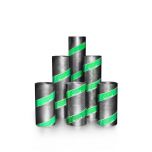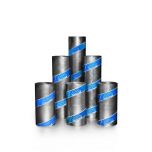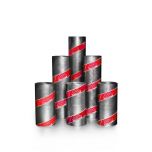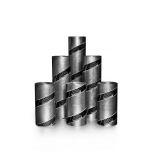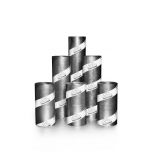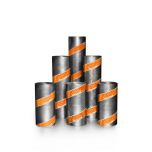The Mega Guide to Lead Codes
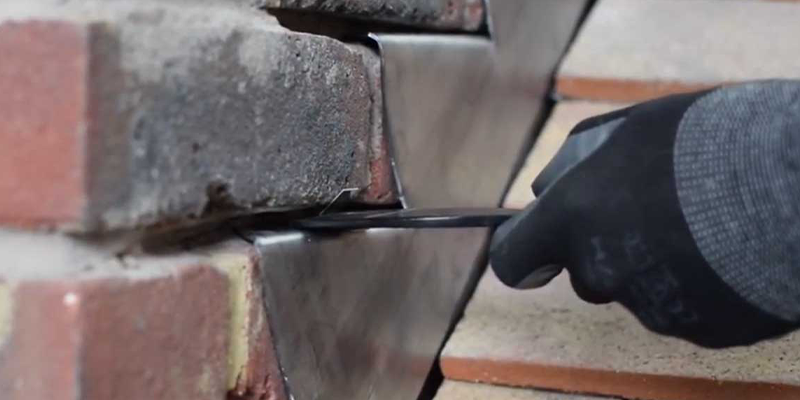
Lead has been used as a roofing material for generations. It is strong, reliable and most importantly can last for hundreds of years. As you would expect, these years of use have brought us innovation, improvement and have significantly deepened our understanding of how and when to use lead, ultimately resulting in the six lead codes. A simple yet refined way of determining what type of lead flashing would best suit your project. In fact, without knowledge of these codes choosing your lead can be an incredibly difficult job.
Table of Contents
- What Are Lead Codes?
- Why are Lead Codes Important?
- What Can Happen If I Choose the Wrong Lead Code?
- What Lead Code Should I Use?
- How to Order Lead Flashing
What Are Lead Codes?
Lead codes are actually very simple. Ranging from Code 3 to Code 8 they separate lead into different thickness and weight. Each number equates to a specific weight measured in Kilograms per square meter (Kg/m²).
|
Lead Code |
Thickness (mm) |
Weight (kg per square metre) |
|
Code 3 |
1.32mm |
14.97kg |
|
Code 4 |
1.80mm |
20.41kg |
|
Code 5 |
2.24mm |
25.40kg |
|
Code 6 |
2.65mm |
30.10kg |
|
Code 7 |
3.15mm |
35.72kg |
|
Code 8 |
3.50mm |
40.26kg |
Why are Lead Codes Important?
Whilst a few millimetres may not seem to make too much of a difference, each code has been specifically classified for different purposes. The most important reason for this is that for lead to function at the high-quality standard it is known for, it must be installed correctly. If the incorrect code is used, rather than outlasting the building its on, the lead can instead be made vulnerable to influences that will make it deteriorate extremely rapidly.
What Can Happen If I Choose the Wrong Lead Code?
Incorrect Installation
When installing lead flashing, it is more than likely that it will need to be folded and worked into place. If the wrong code is used, this process could very possibly cause the lead to split and crack. In the best-case scenario, where you spot this damage, the lead will become unusable and you will have simply wasted some money. However, worst case, if the damage is not found, and the incorrect installation is completed you will have exposed your building to water penetration and the mould, mildew and rot that goes along with it.
Expansion & Contraction
It is commonly known that some materials will expand in the heat of the day and contract during the cool at night. Lead is one of these materials. What this means, is that when it has been used to cover medium to large sized areas – again, if the wrong code has been fitted – it can buckle, twist and split. As you likely will have guessed, this will expose your roof to water penetration as well.
Water
A primary reason for the existence of most roofing materials, water can be one the most damaging elements your roof has been designed to protect against. Depending on application of lead flashing, different codes will be needed to provide adequate protection. For example, Valley Gutters would need a thicker section of lead then general flashing as they are more susceptible to water damage. If the lead is to thin, water may still be able to reach the vulnerable areas of your roof even if it has been installed correctly and does not have any splits or cracks across its surface.
What Lead Code Should I Use?
Now that we understand why lead codes are important, we can address the bigger question. Which should you use? Below, we’ve listed all six codes, their weight, thickness and a list of suitable applications.
Code 3 Lead
Thickness: 1.32mm | Approx. Weight: 14.97 Kg/m²
Code 3 lead is ideal when you are looking to fit a soaker against a chimney stack or wall as it is the lowest profile available. Realistically, anything other than this will require a different code.
Code 4 Lead
Thickness: 1.80mm | Approx. Weight: 20.41 Kg/m²
Code 4 lead has a much wider range of applications than code 3. Other than also being suitable for use as a soaker, it can also be used as: Flashing, pitched valley gutters, parapet, box and tapered valley gutters, dormers as well as vertical cladding.
For the best results when using code 4 lead as flashing, the length of each section should not exceed 1500mm (or 1000mm for flashings to verges of asphalt or felt roofs).
Code 5 Lead
Thickness: 2.24mm | Approx. Weight: 25.40 Kg/m²
Code 5 lead is by far the most versatile and can be used in the same fashion as code 4 except for as a soaker. This lead can also be used for flat and pitched roofs.
When using with a flat roof/dormer top, there should be no more than 2000mm spacings between the drips and no more than 600mm spacings of joints with the fall. Similarly, with pitched roofs the maximum spacing between laps is 2000mm with the limit for spacing of joints with the fall also being 600mm.
Code 6 Lead
Thickness: 2.65mm | Approx. Weight: 30.10 Kg/m²
With code 6 lead, the maximum spacings between drips on flat roofs and laps on pitched roofs increases to 2250mm with spacing of joints with the fall increasing to 675mm. The added thickness also provides slightly better protection from the ingress of water. However, Code 6 lead cannot be used as a soaker or as vertical cladding.
Code 7 Lead
Thickness: 3.15mm | Approx. Weight: 32.72 Kg/m²
Again, the spacing increase correlates with the increased thickness. With code 7 lead, a spacing of 2250mm becomes 2500mm for flat roofs and 2400mm for pitched under 60°. Anything between 60° and 80° remains at 2250mm.
Code 7 is the most durable option for pitched roofing applications, as Code 8 is far more suitable for flat roofing. It cannot be used as a soaker, as flashing or as vertical cladding.
Code 8 Lead
Thickness: 3.50mm | Approx. Weight: 40.26 Kg/m²
The highest profile available, code 8 lead is perfect for use on flat roofs where resting water is common. As before, 2500mm increases to 3000mm and 675mm increases to 700mm. Code 8 can also be used on parapets, valleys and dormers but, like code 7, is not suitable for flashing, as a soaker or as vertical cladding.
How to Order Lead Flashing
Here at Roofing Megastore, you can view all of our lead flashings here where we stock every code from leading brands such as Midland Lead and British Lead. You will almost certainly be able to find the perfect product for your home improvement project or new build. You can also contact our award-winning customer service team for the latest information on any deals via our online chat or direct at 01295 565 565. We will be more than happy to advise you on the best flashing to suit your particular needs.
